Plaque murale en porcelaine figurant un Chinois avec un enfant, Meissen, 1993 A Meissen rectangular wall plaque depicting a Chinese man with a child, 1993Modelled by Paul Scheurich in high relief, the bearded figure holding a baby, seated in a scrollwork plinth beneath a parasol, the reverse pierced for hanging, 87cm high; 47cm across; 14cm deep, crossed swords mark in underglaze-blue to left edge of plaque, incised model number A. 1138 to reverse, impressed former's number 100, year symbol for 1993 and crossed swords mark and 'Weiss'FootnotesLiterature: Rafael 1995a, ill. 27; Rafael 1995b, ill. 3b Exhibited: Meissen, Schauhalle der Staatlichen Porzellan-Manufaktur Meissen, Paul Scheurich 1883-1945 Porzellane für die Meissener Manufaktur, 21 September 1995-10 January 1996; Meissen, Museum der Meissen Porzellan-Stiftung, Paul Scheurich Porzellangestalter Zeichner Grafiker, 6 March 2020-21 February 2021 Scheurich offered the three large relief panels to the Meissen manufactory at the beginning of 1923. In a letter of 25 January, however, Max Adolf Pfeiffer, replied to Scheurich that "...Wir würden [...] nicht die Möglichkeit haben, diese Platten in dieser Größe ausführen und entsprechend auf dem Markt bringen zu können." [We do not have the possibility of producing and bringing to the market plaques of this size], and suggested that it would be in his interest to offer them to the Karlsruhe Majolika manufactory. The use of ceramics in architecture was fashionable in the early 1920s, and Schuerich had already designed a set of wall tiles around 1920 that were produced by the Karlsruhe majolica manufactory (see lots 44-46). Scheurich was acutely aware of the design possibilities and technical difficulties of porcelain production; there is no suggestion, however, that he intended the plaques to be made in anything other than porcelain. In October 1925, when Scheurich had been ill for more than two years, Käthe Scheurich offered the plaques again to the manufactory. Pfeiffer felt that a purchase made no commercial sense and delayed in the hope that Scheurich would recover his health. He finally purchased the plaques in April 1926 for RM 1,500 each: a touching gesture of support for Scheurich and his family in their financial need. In view of the technical and commercial difficulties of producing the plaques in porcelain, the manufactory considered producing them in 'Kachelmasse' [tile paste] as decorative panels for stoves and drawings of all three were included in a stove catalogue of 1930 (Rafael 1995b, ill. 6). A single example of the Chinese lady made of the "stove paste" survives at the manufactory, and it was made in porcelain after the Second World War. One such plaque adorned Scheurich's grave in Brandenburg, though it was broken and replaced by a bronze example in 1995. The immense technical difficulty of firing such plaques cannot be understated: the ambition is reminiscent of the large Meissen animals made for the Japanese Palace in the early 1730s, and the result also a testament of Scheurich's artistic talent and his profound understanding of the expressive qualities of the material.
Plaque murale en porcelaine figurant un Chinois avec un enfant, Meissen, 1993 A Meissen rectangular wall plaque depicting a Chinese man with a child, 1993Modelled by Paul Scheurich in high relief, the bearded figure holding a baby, seated in a scrollwork plinth beneath a parasol, the reverse pierced for hanging, 87cm high; 47cm across; 14cm deep, crossed swords mark in underglaze-blue to left edge of plaque, incised model number A. 1138 to reverse, impressed former's number 100, year symbol for 1993 and crossed swords mark and 'Weiss'FootnotesLiterature: Rafael 1995a, ill. 27; Rafael 1995b, ill. 3b Exhibited: Meissen, Schauhalle der Staatlichen Porzellan-Manufaktur Meissen, Paul Scheurich 1883-1945 Porzellane für die Meissener Manufaktur, 21 September 1995-10 January 1996; Meissen, Museum der Meissen Porzellan-Stiftung, Paul Scheurich Porzellangestalter Zeichner Grafiker, 6 March 2020-21 February 2021 Scheurich offered the three large relief panels to the Meissen manufactory at the beginning of 1923. In a letter of 25 January, however, Max Adolf Pfeiffer, replied to Scheurich that "...Wir würden [...] nicht die Möglichkeit haben, diese Platten in dieser Größe ausführen und entsprechend auf dem Markt bringen zu können." [We do not have the possibility of producing and bringing to the market plaques of this size], and suggested that it would be in his interest to offer them to the Karlsruhe Majolika manufactory. The use of ceramics in architecture was fashionable in the early 1920s, and Schuerich had already designed a set of wall tiles around 1920 that were produced by the Karlsruhe majolica manufactory (see lots 44-46). Scheurich was acutely aware of the design possibilities and technical difficulties of porcelain production; there is no suggestion, however, that he intended the plaques to be made in anything other than porcelain. In October 1925, when Scheurich had been ill for more than two years, Käthe Scheurich offered the plaques again to the manufactory. Pfeiffer felt that a purchase made no commercial sense and delayed in the hope that Scheurich would recover his health. He finally purchased the plaques in April 1926 for RM 1,500 each: a touching gesture of support for Scheurich and his family in their financial need. In view of the technical and commercial difficulties of producing the plaques in porcelain, the manufactory considered producing them in 'Kachelmasse' [tile paste] as decorative panels for stoves and drawings of all three were included in a stove catalogue of 1930 (Rafael 1995b, ill. 6). A single example of the Chinese lady made of the "stove paste" survives at the manufactory, and it was made in porcelain after the Second World War. One such plaque adorned Scheurich's grave in Brandenburg, though it was broken and replaced by a bronze example in 1995. The immense technical difficulty of firing such plaques cannot be understated: the ambition is reminiscent of the large Meissen animals made for the Japanese Palace in the early 1730s, and the result also a testament of Scheurich's artistic talent and his profound understanding of the expressive qualities of the material.
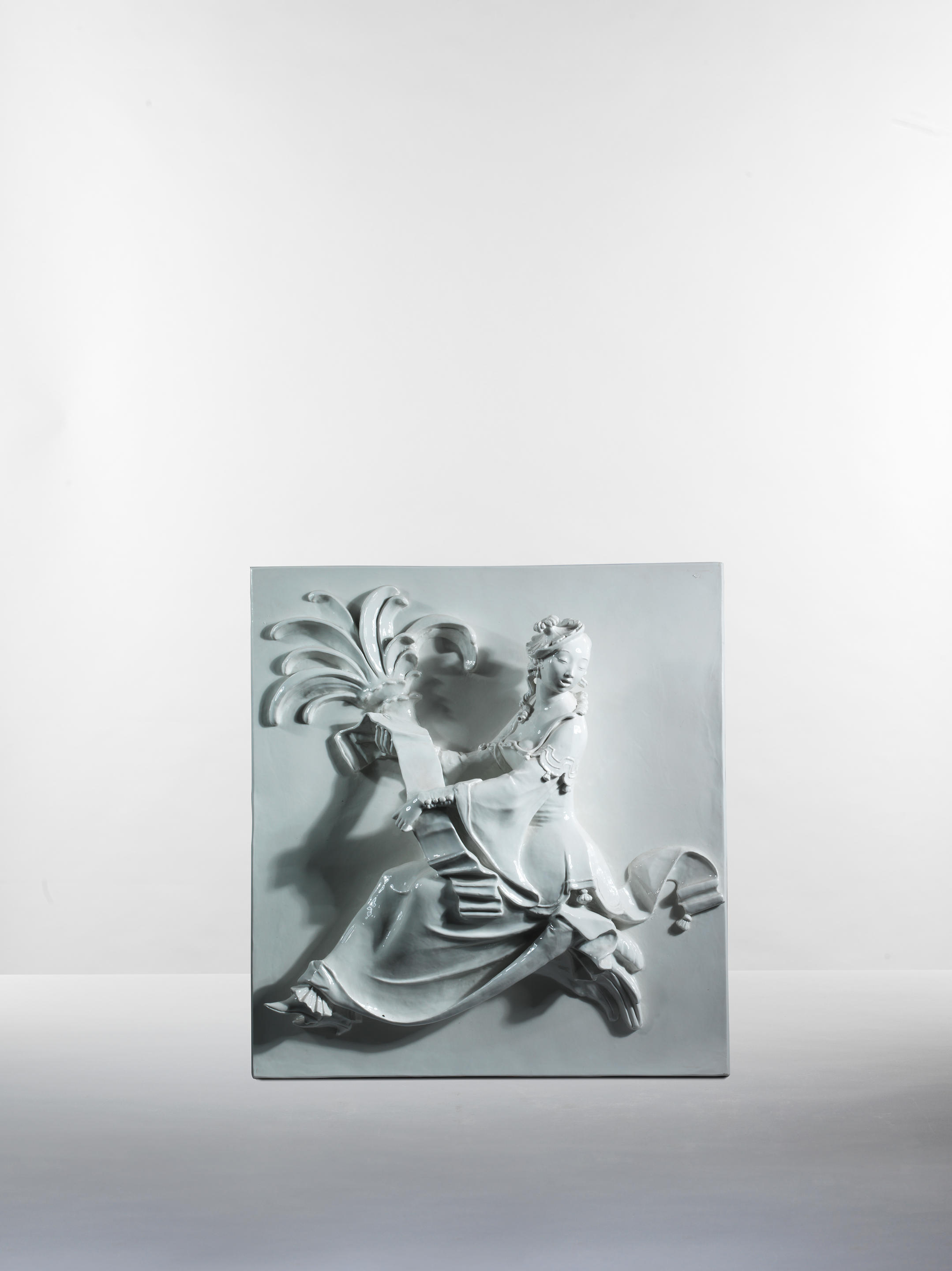

.jpg)


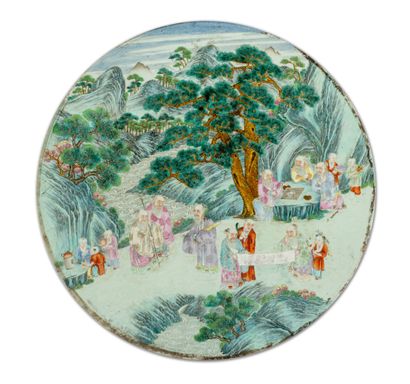


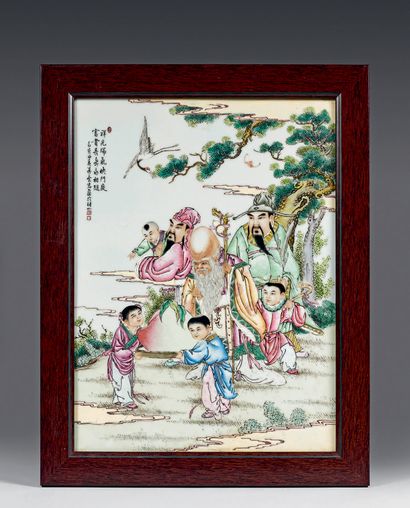

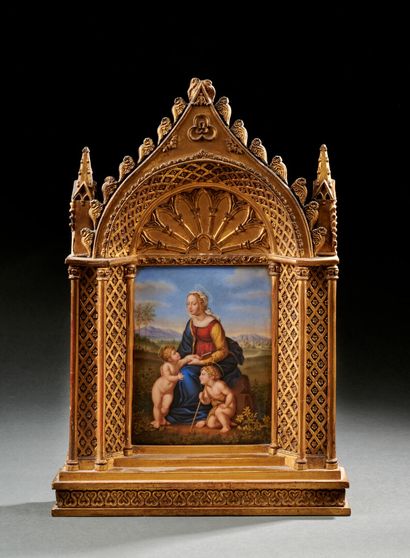


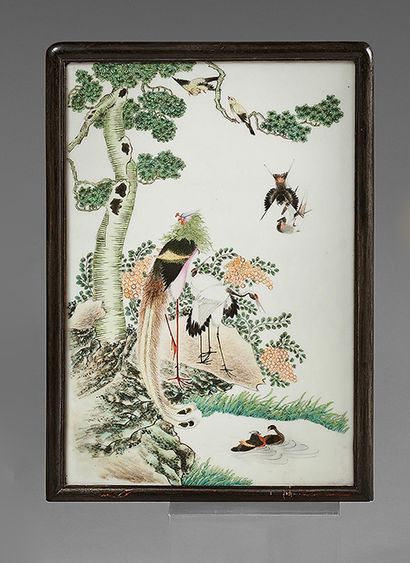

Testen Sie LotSearch und seine Premium-Features 7 Tage - ohne Kosten!
Lassen Sie sich automatisch über neue Objekte in kommenden Auktionen benachrichtigen.
Suchauftrag anlegen